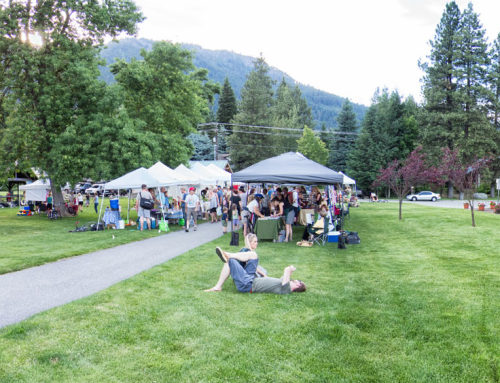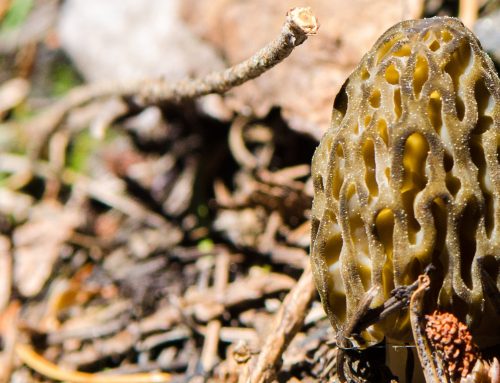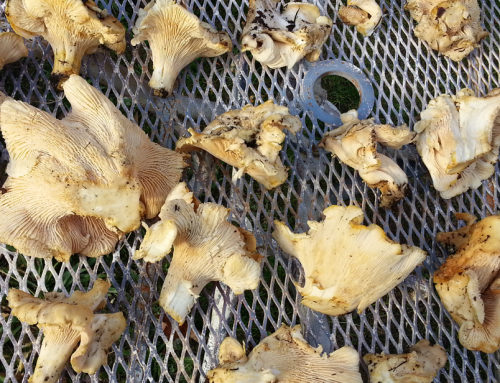
Foraging, the art of finding delicacies in often uncommon places, has become a popular pastime for many; a burgeoning obsession and subculture that revels in the joy of transformation.

Foraging, the art of finding delicacies in often uncommon places, has become a popular pastime for many; a burgeoning obsession and subculture that revels in the joy of transformation. The search for food (free food!) undoubtedly hits upon long engrained compulsions that go back to our hunter/gatherer days when foraging meant survival.
But, there is more to the appeal of finding food today than just satisfying hunger. It’s the satisfaction of heading into the woods, deserted urban lots, or even one’s own backyard and coming home with a bounty that’s fresher and tastier than anything that could be found at the store because it’s somehow sprinkled with a little bit of magical foraging dust. It’s the wink and the nod of secret knowledge that makes foraged food special-the idea that “yes-we are eating something that other people don’t even know is edible! Ha! And it tastes awesome!”. It’s the feeling of loading up a bag with goodies that other pass by and it’s the constant search for new foragables.
First you may start with morels and nettles and then move onto lesser known mushrooms, garden variety weeds, and eventually venture into the world of rarely eaten oddities such as milkweed pods and cat tail pollen. Foraged edibles are available year round but the best bounty may be found in early spring, when tender shoots are devoid of bitterness and plants are rushing forward with blooms and buds.
This is the time of year when the air is still crip and nothing feels better than getting outside to clean out flowerbeds and turn over the soil in preparation for a new season of gardening. It’s also the time of year when you don’t have to go far to find tasty edibles, many of which can be had within steps of your front door and some of which you’ll most likely be trying to get rid of anyway!

In Leavenworth in the spring, the time is right for harvesting and eating weeds like dandelions and lambs quarters as well as maple blossoms, both wild and domesticated. Dandelions might just be the most maligned of all weeds, but they also surprisingly contain a host of beneficial vitamins and minerals and were originally brought to this country as a food crop. Dandelion blossoms can be battered and fried as fritters but in the spring, but an even more exotic use for them is to collect the greens and sauté them into Lebanese dip called Hindbeh. Spring is the best time to collect dandelion greens because they will be at their least bitter state. Plus, you’ll be doing your garden a favor at the same time as putting food on the table.
Couple of bunches of dandelion greens
One onion, thinly sliced
Garlic Olive oil
Juice from ½ lemon, fresh squeezed
Blanch the dandelions in boiling water then plunge into ice water. Once cool, squeeze out exceess water and chop. Saute onion in olive oil until carmelized. Reserve half for garnish. Add the dandelion greens and garlic and continue to sauté until greens are soft (at least 5 minutes). Stir in lemon juice and remove from heat. Serve with reserved onions on top with a large dollop of plain yogurt. Hindbeh makes a great dip for any kind of flatbread, such as pita or naan.

Just like dandelions, Lambs Quarter is also a very common weed in our area and one that is grown as a food crop in other parts of the world. Lamb’s Quarter is an inauspicious leafy weed that can be sautéed or steamed and in general, treated as you would other greens such as spinach or kale.

Maple blossoms fall into the category of over looked and surprisingly edible, which make them a little extra special when it comes to cooking. Fat of the Land blogspot gives a couple of treatments, including using maple blossoms to make a mint pesto and frying them into fritters. We’ve tried out the fritters recipe and can attest that they are pretty tasty. Not the type of thing you would want to eat frequently, but since these little blooms are only available for a short period of time anyway so they make a great seasonal treat.
2 – 4 cups blossoms
1 cups flour
1 tsp baking powder
1 egg
1 cups ice water
vegetable oil (I used coconut oil)
powdered sugar
Stir together batter ingredients then dredge each blossom in the batter and fry until golden brown and crispy. Drain on paper towels, sprinkle with copious amounts of powdered sugar and serve immediately. These are best while still hot and will take you right back to your days as a child eating carnival funnel cakes.
You can learn more about foraging at Fat of the Land or check out one of the many foraging books and remember-don’t just pull your weeds. Eat them!




